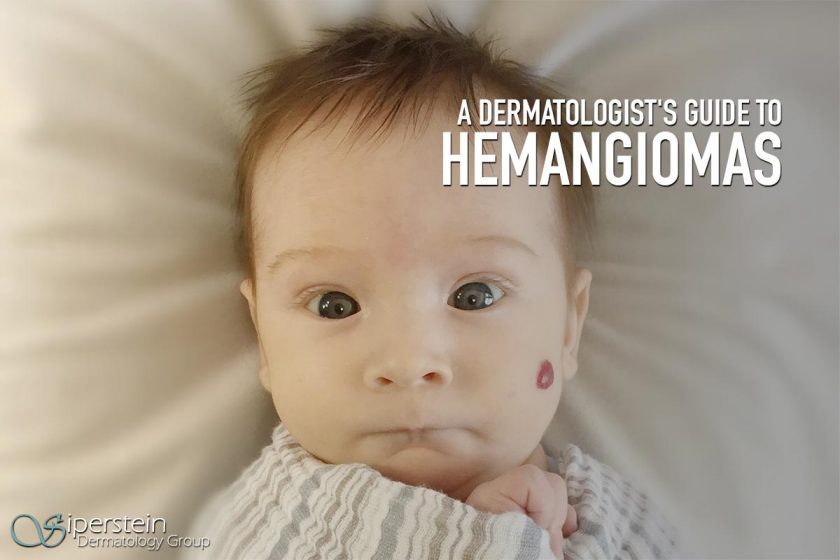Hemangiomas start as a small birthmark, typically appearing in the first three weeks after birth. Over the next two to four months, the color brightens and the mark increases in size, but most are harmless. Unlike other childhood skin conditions and infections, most hemangiomas will likely disappear without treatment between the ages of 3 and 5.
What Causes Hemangiomas?
The precise cause of Hemangiomas is unknown. They are non-cancerous tumors formed by a cluster of blood vessels that appear either on or under the skin. Those on the surface form a bright red, rubbery bump that varies in size, while the deeper ones tend to be blue, resembling a bruise.
Hemangiomas often occur on the head, neck, or body. Internal hemangiomas grow on internal organs, most often the liver and brain, and can go undetected unless they begin to cause pain and discomfort. Generally, they are discovered while another condition is being diagnosed.
Does A Hemangioma Need To Be Treated?
Watching a birthmark grow can be alarming, but most hemangiomas will stop growing by the time the baby is four months old. Most hemangiomas will go away without treatment.
When To Take Your Child To A Doctor For A Hemangioma
A hemangioma is not a dangerous condition but can pose health concerns if located in a position where it can interfere with bodily functions or development. It’s a good idea for your child to be evaluated by a specialist should they have a hemangioma in any of these places:
- The face, particularly if the mark is close to eyes, nose or mouth. Evaluation is also a good idea if the hemangioma covers a large portion of the face
- Ear tips
- Behind or around the eyes
- Over the lumbar region of the spine (lower spine)
- Anywhere covered by the diaper
- Neck creases or armpit
- Center of the neck
Other Reasons To See A Specialist
- If your child has multiple hemangiomas it could be indicative of internal hemangiomas.
- A rapidly growing hemangioma.
- If you’re not sure that what your child has is a hemangioma or if the mark might be something else.
Should Hemangiomas Be Removed?
Hemangiomas themselves aren’t dangerous, but they will need immediate investigation and treatment if they are located in a position where they affect your child’s ability to see, hear, breathe, or swallow.
Treating Hemangiomas – The Options
The management and treatment of hemangiomas will vary depending on how fast they are growing, where they are situated, how big or small they are, and how deep they are in the skin. Some options are:
-
No Active Treatment, But Close Observation
Smaller hemangiomas that aren’t situated in the high-risk zones may be left to resolve themselves, but watched closely for early detection of complications.
-
Beta-Blocker Medication
From 5-weeks-old, infants can take oral propranolol, while topical timolol can be applied directly to the skin.
-
Laser Therapy
Lasers are effective in treating hemangiomas located in airways, to heal hemangiomas that have become infected, to minimize small blood vessels that are left on the surface of hemangiomas after they have shrunk. Lasers can be used to decrease the change in texture left on the skin. In some cases, lasers may cause scars.
-
Surgical Removal
If the hemangioma has already caused permanent tissue damage, threatening a vital organ or causing bleeding, surgery will be considered.
-
Corticosteroids
Corticosteroids used to be a common treatment, but now are generally given when there is an adverse reaction to propranolol.
When In Doubt, Ask A Professional
Our team of medical professionals is made up of experts in a variety of medical conditions, surgical procedures, and advanced techniques. They have many years of combined experience in all dermatological conditions.
When it comes to our younger patients, our expertise in all childhood skin conditions combined with our child-friendly bedside manner will ensure that your child gets the treatment they need, while being kept as comfortable as possible.


